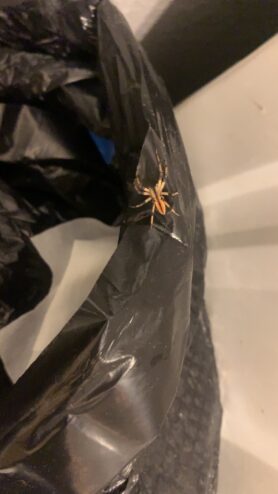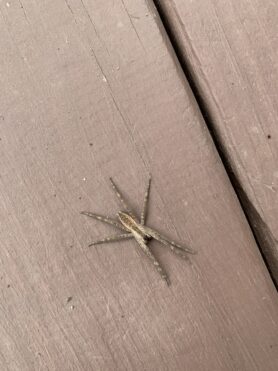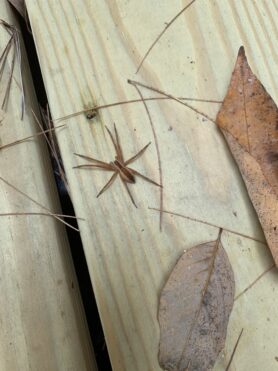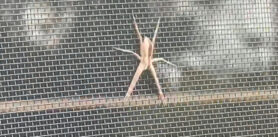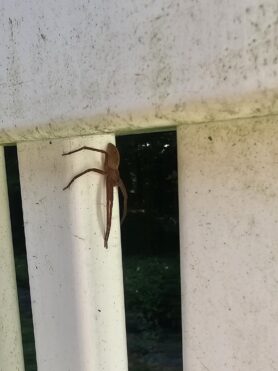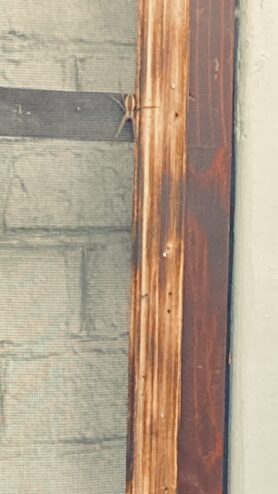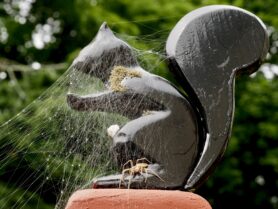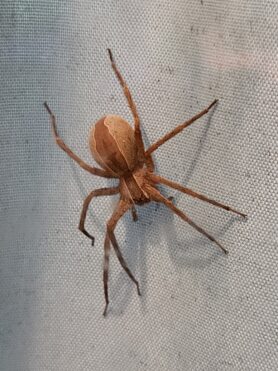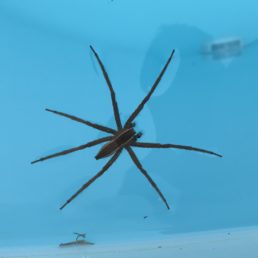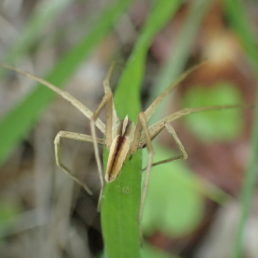Taxonomic Hierarchy
- Kingdom: Animalia
- Phylum: Arthropoda
- Class: Arachnida
- Order: Araneae
- Suborder: Araneomorphae
- Family: Pisauridae
- Genus: Pisaurina
- Species: Pisaurina mira
Common Name (AAS )
)
Nursery Web Spider
Author
Charles Athanase Walckenaer, 1837
Primary Colors
Sightings Overview
There have been 286 confirmed sightings of Pisaurina mira (Nursery Web Spider), with the most recent sighting submitted on November 22, 2023 by Spider ID member number1otaku. The detailed statistics below may not utilize the complete dataset of 286 sightings because of certain Pisaurina mira sightings reporting incomplete data.
- Web: 7% of the time, Pisaurina mira spiders are sighted in a spider web (Sample size: 286)
- Sex: 8 female and 40 male.
- Environment: Pisaurina mira has been sighted 227 times outdoors, and 92 times indoors.
- Outdoors: Man-made structure (148). On flower (4). Low foliage (20). High foliage (7). Ground layer (28). Under rock or debris (6). Freshwater river, lake, stream (5). Forest (8). Cave (1).
Location and Range
Pisaurina mira (Nursery Web Spider) has been sighted in the following countries: Canada, United States.
Pisaurina mira has also been sighted in the following states: Alabama, Arkansas, Connecticut, Delaware, Florida, Georgia, Illinois, Indiana, Kansas, Kentucky, Louisiana, Maine, Maryland, Massachusetts, Michigan, Minnesota, Mississippi, Missouri, New Hampshire, New Jersey, New York, North Carolina, Ohio, Oklahoma, Pennsylvania, Rhode Island, South Carolina, Tennessee, Texas, Vermont, Virginia, West Virginia, Wisconsin.
Seasonality
Pisaurina mira has been primarily sighted during the month of May.
- January: 1
- February: 7
- March: 13
- April: 33
- May: 146
- June: 47
- July: 6
- August: 2
- September: 3
- October: 18
- November: 6
- December: 4
Additional Remarks
- Has at least six distinct color/pattern variations, which can make the species more difficult for the average person to identify. One of the most unique variations is mostly all pale with a thin, dark brown line down the center of the body and dark brown bands at the leg joints: it’s been referred to as the “subinflata variation” (Bishop 1924).
- May be one of the most common spiders in eastern North America (as reported by Carico 1972).
- Frequently mistaken for a “wolf spider” of the family Lycosidae, but the eye arrangements are vastly different.
- Egg sac is a whitish sphere, about 15mm in diameter, carried in the female’s chelicerae (jaws); she hangs it in a “nursery web” when the babies are ready to emerge and then guards them until they’ve dispersed.
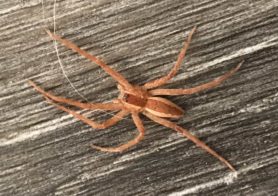 The spider species Pisaurina mira, commonly known as Nursery Web Spider, belongs to the genus Pisaurina, in the family Pisauridae. Pisaurina mira spiders have been sighted
The spider species Pisaurina mira, commonly known as Nursery Web Spider, belongs to the genus Pisaurina, in the family Pisauridae. Pisaurina mira spiders have been sighted 